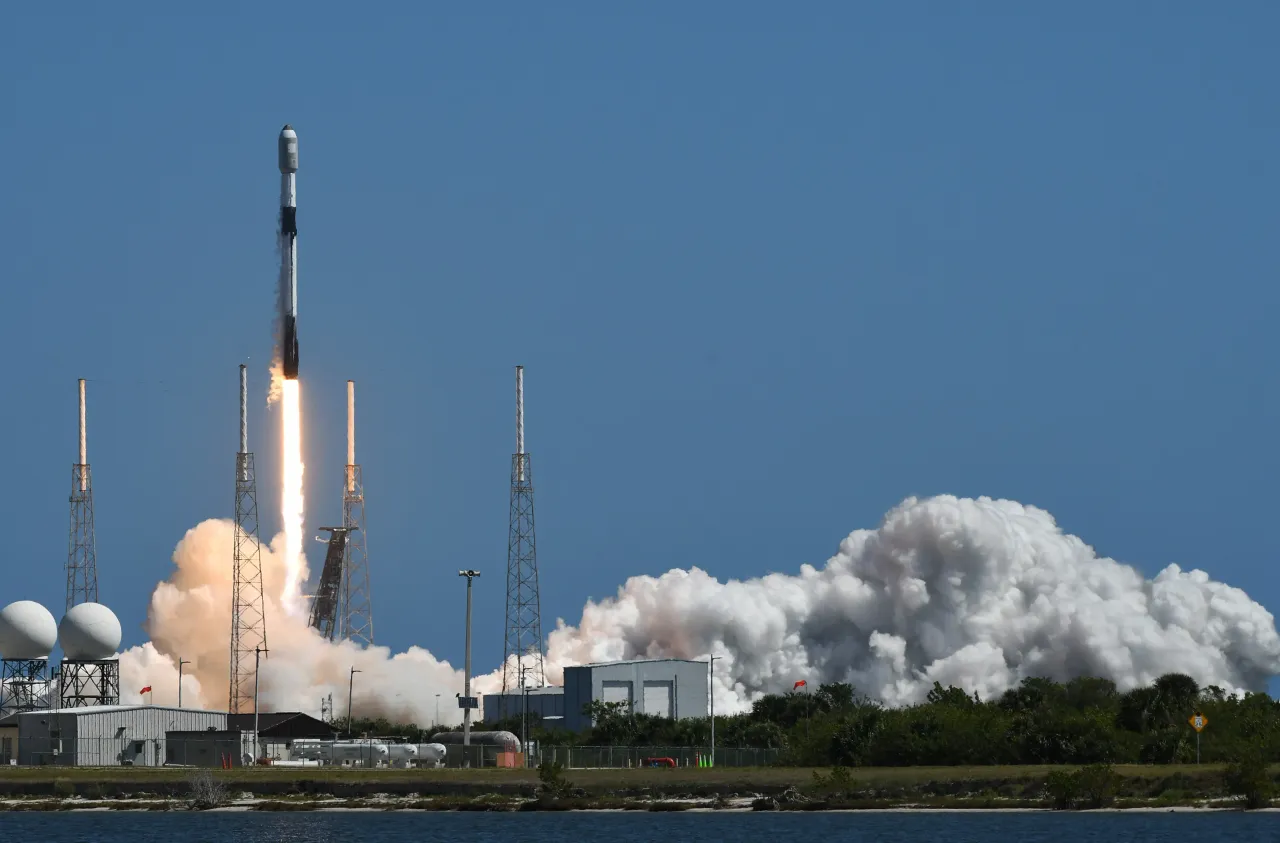Advertisement|Remove ads.
SpaceX Falcon 9 Rocket Launches 28 Starlink V2 Minis To Orbit From Cape Canaveral

Elon Musk’s SpaceX launched another batch of Starlink satellites early Wednesday from Cape Canaveral’s Space Force Station.
Liftoff occurred at 7:10 a.m. ET, with the Falcon 9 carrying 28 Starlink V2 Mini satellites into low Earth orbit as part of the Starlink 10-56 mission. On Stocktwits, retail sentiment around SpaceX trended in the ‘bullish’ zone at the time of the rocket launch.
The booster, Falcon 9 first stage B1095, was on its second flight after previously launching a Starlink mission on May 20. About 8.5 minutes post-launch, B1095 successfully landed on the droneship ‘Just Read the Instructions.’ A successful touchdown marked the 133rd recovery on that vessel and the 494th Falcon 9 booster landing overall.
At 8:17 a.m. ET, SpaceX confirmed that the deployment of the new Starlink satellites was successful. Wednesday’s launch comes on the heels of SpaceX’s latest test of its mega rocket Starship on Tuesday night. The launch also completed its first-ever deployment of a test payload, which consisted of eight dummy satellites. The successful demo came after multiple mishaps. Tests earlier this year, in January and March, resulted in wreckage falling over the ocean. Its most recent test in May ended with the Starship tumbling out of control and breaking apart.
SpaceX is hoping its Starship rockets will be capable of sending astronauts back to the moon, in partnership with NASA. NASA has ordered two Starships from the company to help take astronauts to the moon later this decade. Meanwhile, Elon Musk’s ultimate goal for SpaceX is to build rockets efficient enough to carry astronauts to Mars.
Read also: Altcoins Surge: Solana, Dogecoin Lead While Ethereum Outpaces Bitcoin’s Rebound
For updates and corrections, email newsroom[at]stocktwits[dot]com.










/filters:format(webp)https://news.stocktwits-cdn.com/large_unitedhealth_jpg_98f759065b.webp)
/filters:format(webp)https://st-everywhere-cms-prod.s3.us-east-1.amazonaws.com/Rounak_Author_Image_7607005b05.png)
/filters:format(webp)https://news.stocktwits-cdn.com/Draft_Kings_jpg_c77a08f48a.webp)
/filters:format(webp)https://news.stocktwits-cdn.com/large_Getty_Images_2149589805_jpg_ceec7778b8.webp)
/filters:format(webp)https://news.stocktwits-cdn.com/vivekkrishnanphotography_58_jpg_0e45f66a62.webp)
/filters:format(webp)https://news.stocktwits-cdn.com/Getty_Images_2169639930_jpg_29c73df7b6.webp)
/filters:format(webp)https://news.stocktwits-cdn.com/shivani_photo_jpg_dd6e01afa4.webp)
/filters:format(webp)https://news.stocktwits-cdn.com/large_rivian_original_jpg_ac931d57b1.webp)
/filters:format(webp)https://news.stocktwits-cdn.com/Aashika_Suresh_Profile_Picture_jpg_2acd6f446c.webp)
/filters:format(webp)https://news.stocktwits-cdn.com/large_hilton_resized_jpg_77915bd7c4.webp)
/filters:format(webp)https://st-everywhere-cms-prod.s3.us-east-1.amazonaws.com/IMG_9209_1_d9c1acde92.jpeg)